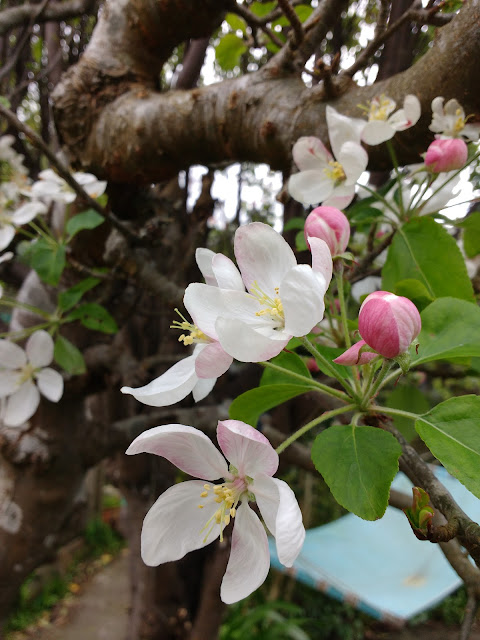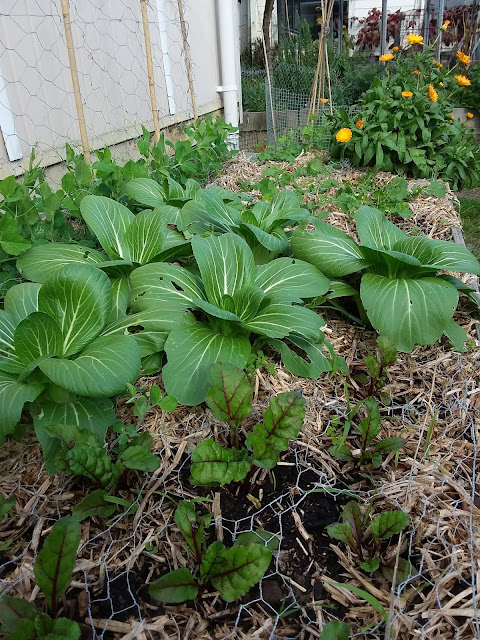Zucchini Monsters
Spring is in fine form. I am completely enchanted by our crabapple blossoms; I had no idea they were so beautiful. The poor thing barely made any flowers last year so I know it is responding well to the pruding I gave it this Winter. I know It's a little much to include pictures of them twice in a row, but just look at them:
I am busy preparing my main veggie bed for Spring planting, so there are only a few crops going at the moment. My Winter carrots in a pot have sped up their growth since Spring hit, and I've done a second thinning - this time yeilding small but edible carrots:
Based on these results, the others will be ready very soon. They came out paler than they should have, and my reading has not been very conclusive on why. Different sources attributed pale carrots to everything from too little water, to not enough sun, to the wrong nutrient balance. So I'm not sure exactly what happened, but the things are still pretty tasty, just not as sweet as they should be.
My seedlings are coming along. On the schedule for September were courgette and butternut squash seeds, and I got them started late in the month. Courgette seedlings are some of the most draumatic to watch emerge. The first sign is a distrubance in the soil: cracks form, something appears to be pushing up from underneath, like tiny zombies raising from the grave. And then, behold: it's alive!
This is from the day they came up:
 |
The same seedlings, just 3 days later:
These little monsters are destined for the front garden bed, so I guess I'd better get started on preparing it. I am trying something new this year with my garden soil preparation. Here in the Wellington and Hutt Valley areas the native soil is a heavy clay, which can be a challenge. Up to now, I have done what I can to improve this soil by digging in lots of compost and other organic material. One of the books I read this Winter was the Koanga Garden Guide. In it, I learned the author Kay Baxter's method for breaking up clay soil involved digging in sand as well as compost. The struggle to improve clay soil has been an ongoing theme in my gardening. So I was willing to try something new.
Friends, my entire gardening experience has been in this one area, and I cannot recall encountering any sand in the soil. My experience of sand is at the beach - not in the garden. So it felt strange to be spreading actual sand over top of my veggie bed! I spread half a 14 liter bag per square meter and dug it in. This was a thin layer but enough to make a visble difference; it didn't look so strange once dug in. I can't wait to find out if it makes a notable difference. I'm planning carrots for one of my square meters, and the results should be a pretty good test of any improvement in soil structure.
Spring is always a time of much activity in the garden. The Winter's reading, contemplating, and planning start to come to gether and it's time to take action. It is also a time for dreaming of Summer, imagining lush garden beds overflowing with veggies. The garden beds are pulled up, turned over, enriched - momentarily bare but holding such promise.
 |





Comments
Post a Comment